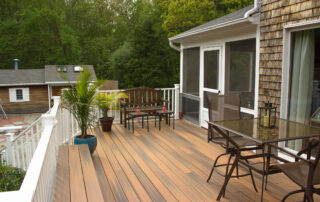How to Choose the Best Paint Colors for Open Floor Plans
Choosing the right shades for your interior painting project can feel overwhelming, especially when you're dealing with an open-concept space. But if you're wondering about the best paint colors for open floor plans, you're in the right place. In open-concept homes, colors do more than decorate walls — they [...]
7 Best Neutral Paint Colors for Commercial Buildings That Make an Impact
If you're planning an exterior commercial painting project, you may be wondering how to choose colors that feel professional and eye-catching. When it comes to curb appeal, the best neutral paint colors for commercial buildings are those that blend timeless style with a subtle edge. Choosing the right palette [...]
Paint’s Impact on Mood: Can It Really Boost Productivity and Influence Customer Perception?
If you're a business owner, you're always looking for ways to improve employee performance and create a great experience for your customers. You’ve probably invested in lighting, layout, even ergonomic furniture—but have you ever considered paint's impact on mood when planning a commercial painting project? Turns out, the color [...]
Top 8 Common Exterior Paint Problems and How Pros Fix Them
A fresh coat of paint can transform the exterior of your home, boosting curb appeal and protecting surfaces from the elements. However, over time, paint can develop issues such as peeling, fading, cracking, or bubbling. These problems not only diminish the beauty of your home but can also lead to [...]
How to Maintain Your Deck and Porch Through California’s Seasonal Changes
' climate offers unique challenges for deck and porch maintenance throughout the year. From coastal fog to intense sun exposure, seasonal rain to drought conditions, your outdoor living spaces face different elements than those in colder regions. Proper maintenance is essential to keep your deck and porch looking [...]
Deck and Fence Maintenance: 5 Awesome Tips to Keep Your Lafayette Home Looking Fresh
Your deck and fence are the unsung heroes of your outdoor space, but they take a beating from the elements. Over time, peeling paint, splintered wood, and fading colors can turn your backyard retreat into an eyesore. The good news? A little maintenance goes a long way in keeping [...]
5 Expert Tips to Save Water-Damaged Exteriors in Orinda
Orinda, we need to talk. While our rainy season might be great for lush gardens and an excuse to binge-watch another series, it’s not doing your home’s exterior any favors. Water-damaged exteriors are like that unwanted guest who overstays their welcome — subtle at first but eventually leaving a mess [...]
Interior Painting in Orinda: 3 Essential Tips for a Great Holiday-Ready Home
Ah, the holidays — a magical time filled with twinkling lights, festive gatherings, and, let’s be honest, a frantic scramble to make your home presentable before guests arrive. If your walls could talk, they might be screaming for a makeover! But don’t worry — refreshing your interior painting in [...]
5 Reasons to Choose Us for Your Exterior Painting in Danville This Holiday Season
As the holidays approach in Danville, CA, it’s the perfect time to refresh your home’s exterior with a stunning new paint job. The mild winter climate in Danville offers ideal conditions for exterior painting in Danville, allowing you to enhance your home’s curb appeal and prepare for festive gatherings. [...]
The Importance of Proper Surface Preparation in Painting
Proper surface preparation is the foundation of a successful painting project, yet it is often overlooked by many homeowners and commercial property owners. Discover the critical importance of surface preparation in painting, its impact on paint durability and aesthetics, and valuable tips for achieving a flawless finish. Whether you are [...]














